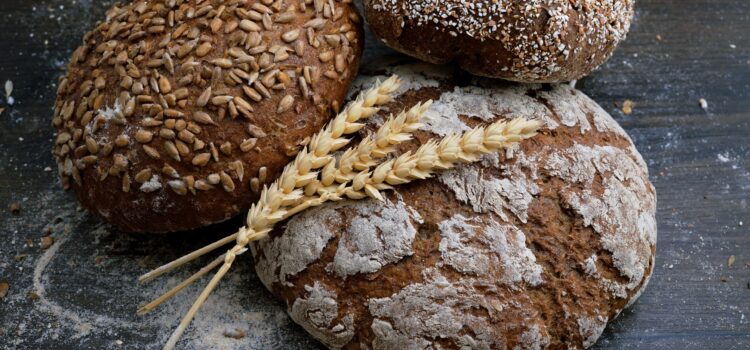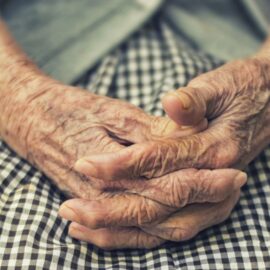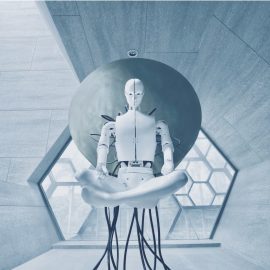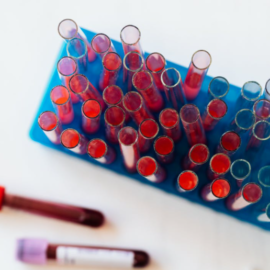

This article is an excerpt from the Shortform book guide to "Glucose Revolution" by Jessie Inchauspé. Shortform has the world's best summaries and analyses of books you should be reading.
Like this article? Sign up for a free trial here.
How does fiber break down in the body? Why is it important to ensure you’re getting enough fiber?
Because we cannot break down fiber, it retains its structure while moving through our digestive system. This means that it doesn’t provide us with energy from glucose molecules. However, it does help keep our gut microbiome (the bacteria living in our digestive system) healthy.
Keep reading to learn about the importance of fiber in the diet and what happens in your body when you eat fiber.
What Is Fiber?
Fiber is made from chains of glucose molecules, but the molecules are joined together in different ways than those in starches. Fiber is tough, holding plants together and keeping them upright. Because of fiber’s strength, no enzymes in our bodies can break it down.
Though we can’t break down fiber and turn it into glucose for energy, bacteria in the colon break it down through fermentation. The fiber fermentation process produces short-chain fatty acids (acids made up of just a few carbon atoms). Short-chain fatty acids play a huge role in the health of our gut because they promote the proliferation of good bacteria in our gut microbiome. Since a thriving microbiome is essential to overall health, eating enough fiber is a vital part of a healthy lifestyle.
Additionally, the natural strength of plant fiber makes it useful for more than just our guts. It’s also used as a material for textiles, rope, and other commercial products. Materials made of plant fibers are more sustainable than materials made of plastics, which derive from non-renewable fossil fuels. Plant fibers are also cheaper and easier to produce than plastics, and they’re biodegradable. Common plant fibers used in commercial products include hemp, cotton, and jute.
How to Eat Fiber
In her book Glucose Revolution, biochemist Jesse Inchauspé discusses the importance of fiber in the diet for controlling your blood sugar levels. According to Inchauspé, you should start your meal with fiber, then eat proteins and fats, and finish with starchy and sweet carbohydrates. Studies indicate that this eating order is as successful at preventing glucose spikes as diabetes medications targeted toward the same issue.
(Shortform note: Research supports the idea that eating in the order Inchauspé recommends can significantly reduce glucose spikes in diabetes patients. In one study, when patients with type 2 diabetes ate fiber and protein before carbohydrates, they showed a 29%, 37%, and 17% decrease in glucose levels at 30 minutes, 60 minutes, and 120 minutes after their meal, respectively.)
According to Inchauspé, you should eat fiber first because it prevents glucose from being absorbed into your bloodstream too quickly, thus preventing harmful spikes. Fiber accomplishes this in three ways. First, it slows the activity of the enzyme alpha-amylase. As a result, your body breaks down starch into glucose more slowly.
(Shortform note: Researchers are trying to isolate the plant compounds and fibers that inhibit alpha-amylase as a potential treatment for type 2 diabetes. Synthetic options for drugs that have the same effect have a lot of unwanted side effects, so natural compounds and fibers could be a better alternative. For example, one study examined grape pomace, a waste product of the wine industry, for its enzyme-inhibiting potential.)
Second, fiber reduces the speed at which your stomach contents empty into your intestines. Glucose is absorbed into the bloodstream through your intestines, so this slowing effect ensures that you won’t get too much too quickly.
(Shortform note: The slowing effect of fiber on digestion specifically comes from soluble fiber, or fiber that can dissolve in water. Soluble fiber draws water into the digestive tract and forms a gel, allowing for slower, more successful nutrient absorption. In contrast, insoluble fiber—fiber that doesn’t dissolve in water—speeds up the digestive process and adds bulk to your stool. Both types are integral to a healthy diet.)
Finally, fiber creates a permeable barrier in your small intestine that makes it harder for glucose to pass through it into the bloodstream, preventing too many molecules from entering at once. (Shortform note: Studies suggest that a lack of dietary fiber leads to the thinning of the intestinal lining, which makes your intestines more permeable. This has implications beyond quick glucose absorption—a too-permeable gut lining can have negative effects on your immune health and leave your gut vulnerable to pathogens.)
Inchauspé suggests making a vegetable dish the first course of every meal, so you never forget to start with fiber. (Shortform note: If creating vegetable dishes for every meal sounds intimidating, consider looking online for high-fiber recipes that can serve as starters. For example, NYT Cooking has a whole page devoted to high-fiber dishes, and the Mayo Clinic has a list of high-fiber recipes organized by category.)

———End of Preview———
Like what you just read? Read the rest of the world's best book summary and analysis of Jessie Inchauspé's "Glucose Revolution" at Shortform.
Here's what you'll find in our full Glucose Revolution summary:
- Why you feel hungry soon after you eat and get tired throughout the day
- The role glucose plays in your body, both positive and negative
- Strategies for taking control of your health and glucose levels






